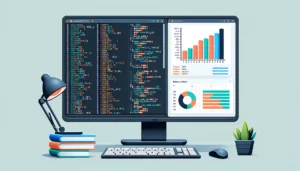Introduction
Levels are a fundamental concept in the R programming language. They play a crucial role in handling categorical data and are commonly used in various statistical and data analysis tasks. In this article, we will explore what levels are in R, how they are used, and their significance in data manipulation.
Understanding Levels
Definition
In R, levels refer to the unique values that a categorical variable can take on. These values represent distinct categories or groups within the data. The concept of levels is particularly important when working with factors, which are variables that can only take on a predefined set of values.
Use Cases
Levels are used in a variety of scenarios in R, including:
Data Analysis: When conducting data analysis, you often need to access the distinct levels of a categorical variable to perform tasks like summarization or visualization.
Data Visualization: Levels play a crucial role in creating meaningful visualizations. By assigning attributes and values to levels, you can control how data is displayed in plots and charts.
Data Transformation: Data transformation tasks, such as recoding or aggregating categories, often involve manipulating levels. The ability to set and extract levels programmatically is valuable in these scenarios.
Working with Levels
In R, you can work with levels using various functions and methods, such as levels() for retrieval and assignment and factor() for creating categorical variables.
When dealing with factors, it’s essential to understand the concept of levels as they relate to the variables in your dataset.
The returns keyword emphasizes the importance of understanding what levels a factor variable returns when accessed.
Why are levels important in data analysis with R?
Levels are essential in data analysis with R for several reasons:
| Categorical Data Handling | In many real-world datasets, variables are categorical, meaning they represent distinct categories or groups. Levels help us manage and analyze such data by providing a structured way to represent and manipulate categories. |
| Data Summarization | Levels allow us to summarize and aggregate data based on categories. This is crucial for generating insights and understanding patterns within categorical variables. |
| Data Visualization | When creating visualizations, levels help label and group data, making charts and plots more interpretable. Assigning attributes to levels can control how data is displayed in graphics. |
| Data Transformation | Levels are fundamental for tasks like recoding, merging, or reordering categories. They provide a consistent framework for making changes to categorical variables. |
| Statistical Analysis | Many statistical tests and models require categorical variables to be properly defined with distinct levels. Levels ensure that the data is in the correct format for these analyses. |
In summary, understanding the use of the $ symbol in R, along with levels in R, are essential for organizing, summarizing, visualizing, and analyzing categorical data, making them fundamental concepts in data analysis.
FAQ
Follow us on Reddit for more insights and updates.





Comments (0)
Welcome to A*Help comments!
We’re all about debate and discussion at A*Help.
We value the diverse opinions of users, so you may find points of view that you don’t agree with. And that’s cool. However, there are certain things we’re not OK with: attempts to manipulate our data in any way, for example, or the posting of discriminative, offensive, hateful, or disparaging material.